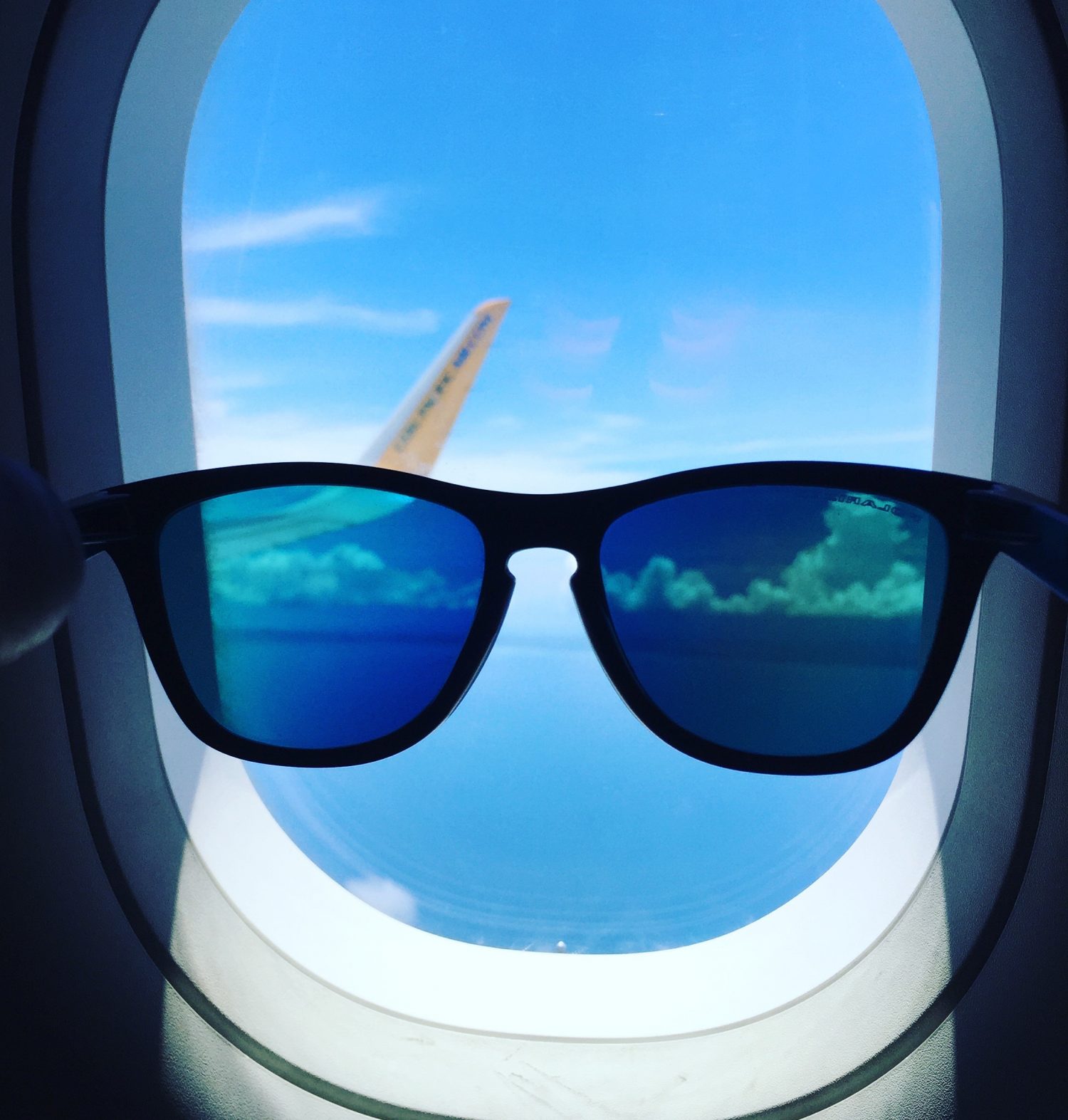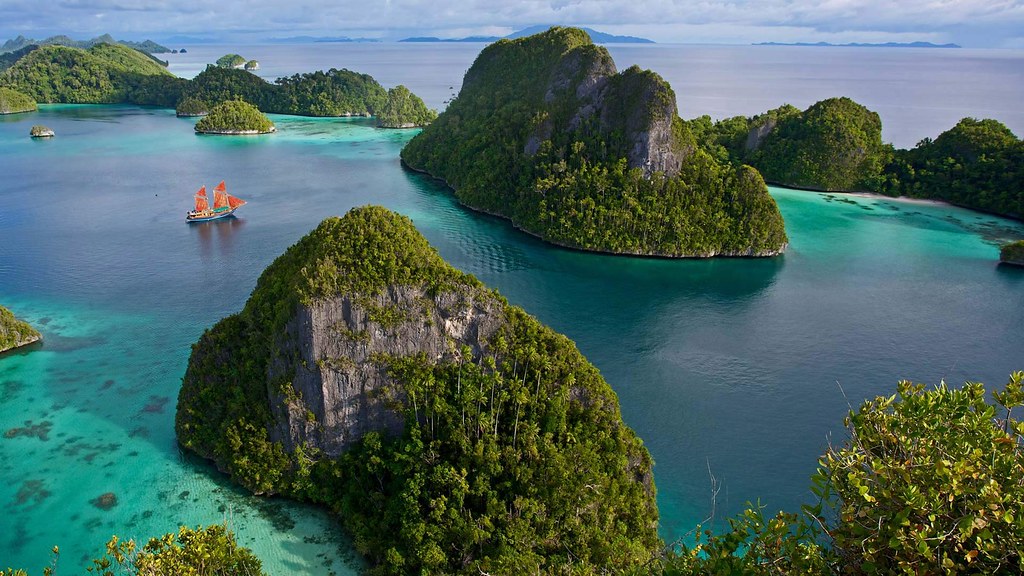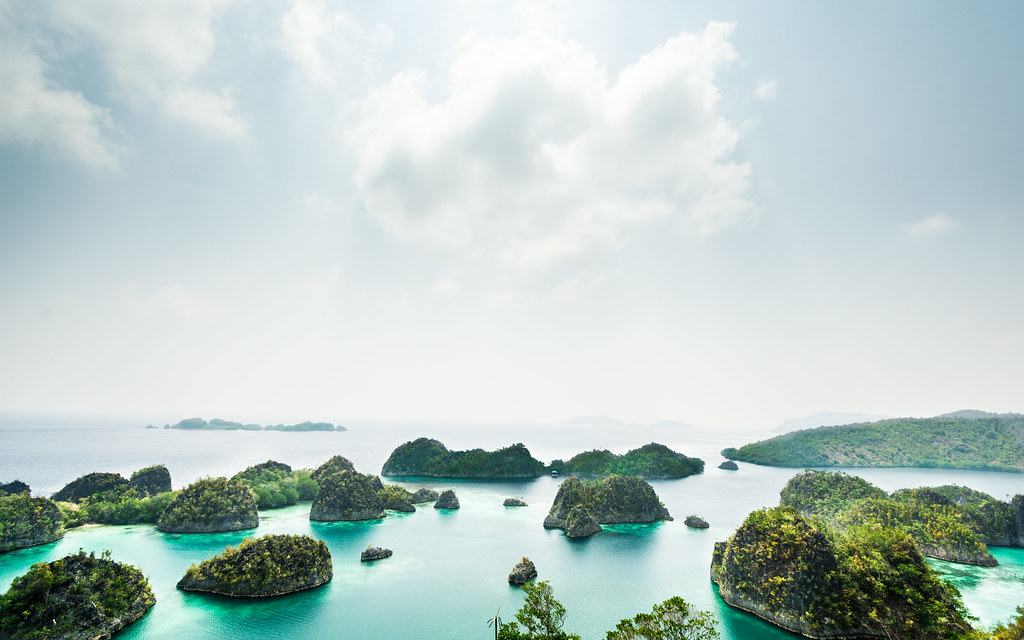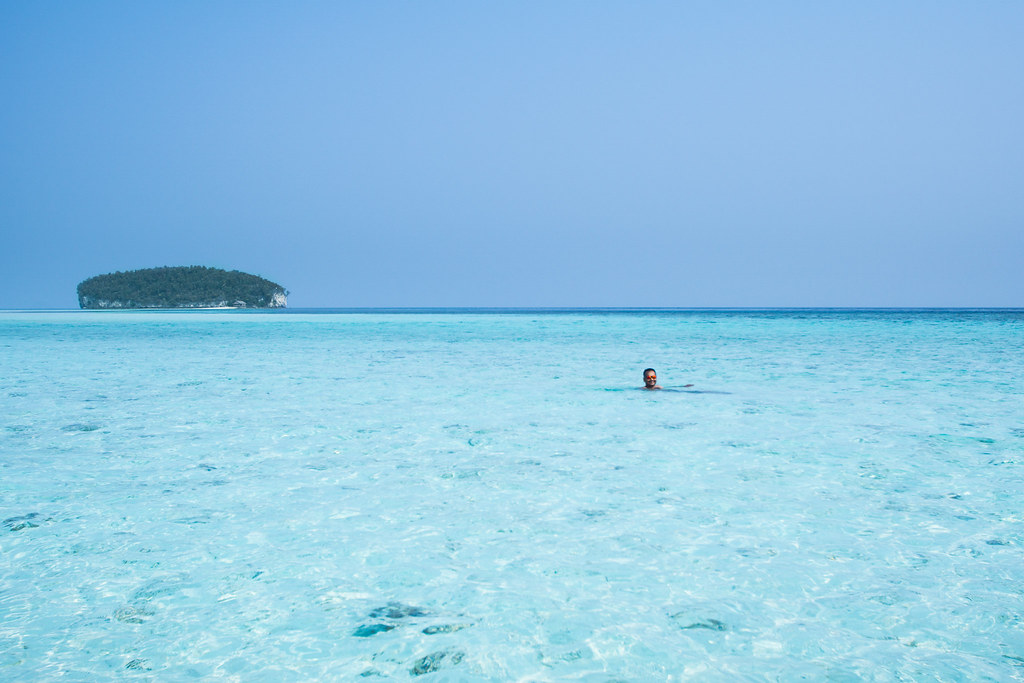After days of research for our upcoming trip to Indonesia, I had almost given up. Raja Ampat looked like a diver’s paradise because I couldn’t see much else than pictures of colorful fishes and corals. Raja Ampat is a life-changing experience in more ways than one. Excellent diving spots and beaches aside, it has many small islands that are inhabited by natives living in small villages. Most of them live without modern-day distractions like cell phones and iPods but they are ever so happy and content. Every year thousands of people from all over the world arrived here to see the diversity under the sea; what were non-divers like me, who had only snorkeled twice in much friendlier waters of Thailand before, to do there? It looked rather expensive too. But just one picture was enough to change our minds. It was unlike anything we had seen before and wanted to witness it first-hand. Here is that picture.
Unfortunately, although we made it to Raja Ampat, we missed Wayag Island because of unforeseen foggy climate in Raja Ampat. But Raja Ampat is a place worth visiting at least once in a lifetime not for just its brilliant scenery but also for getting a taste of a civilization that’s devoid of modern-day distractions.
Where is Raja Ampat?
On the easternmost front of Indonesia lies the Papua region, one of the remotest locations in the world. Raja Ampat is in West Papua and you need a permit to enter the region. No matter where in Indonesia you are flying from, you will most likely make the following stops:
Point of origin → Makassar → Sorong → Waisai → Your destination
That’s minimum 2 flights, a ferry, and a boat ride, not counting the taxi rides in between.
Is Raja Ampat a worthy place to visit for non-divers?
Absolutely! Actually, I kind of regret having visited Raja Ampat so early on in my life because it has spoiled me forever with its charm. I highly doubt that any other island country can impress me more; here’s why.
It’s unlike the rest of Indonesia
For the most part Indonesia has everything a traveler wants—scenic locations, greenery, good food, friendly locals and even high-speed internet. But it is only after visiting Raja Ampat that you discover the uniqueness of the country. Firstly, since it is almost entirely disconnected from the rest of the world, you have to be prepared to make a few adjustments to your lifestyle; for instance, food. Surprisingly, there are no fruits or vegetables growing anywhere in Raja Ampat, so your diet will mainly consist of poultry, fish and rice. Your host is your best friend because there is hardly anyone else (apart from other travelers) to talk to. There is no electricity so most homestays operate generators at night for a few hours, which means no TV, internet or hot water. But the natural beauty that Raja Ampat is endowed with will more than make up for these things.
Every island in Raja Ampat has something different to offer
Every island is unique in its own way. On Kri Island you will find the most different types of marine creatures and good diving spots. West Waigeo has corals, mangroves and bioluminescent plankton. Further north is Wayag Island which looks much like the country of Palau. No matter which island/ homestay you choose to stay at, there will be surprises in store for you.
While taking a stroll in Manyaifun village in Waigeo Island, we witnessed this scene where the local women were making fresh coconut oil and frying fish while kids played football nearby. As we approached them, they welcomed us with excitement and curiosity about a life thousands of miles away. And we were the first Indians to ever visit their village, as our host in Waryawer homestay happily told us.
Snorkelling in the pristine waters
If like me you don’t intend to dive in Raja Ampat then you can always try snorkeling to see the fishes and turtles up close. The best part about my stay at Raja Ampat was that I didn’t have to venture too far from my homestays to snorkel, every homestay is nestled right in the middle of an ecological heaven. However, snorkel gear is not available for sale or rent anywhere in West Papua, so you have to carry them wherever you are flying from.
It’s the biggest aquarium you will ever see
Because I didn’t dive, I spent most of my time on the jetty of my homestay. Even though I hadn’t joined the other guests in diving in different spots, I was told that I did not miss much, for I got a good view of about 70% of the species just from my homestay’s jetty. The view below the jetty would get so exciting sometimes that it didn’t know what to pay more attention to- the huge school of fish that just arrived, or the dolphins dancing in a coordinated fashion just meters away?! It was like nature’s own huge aquarium.
A different homestay experience
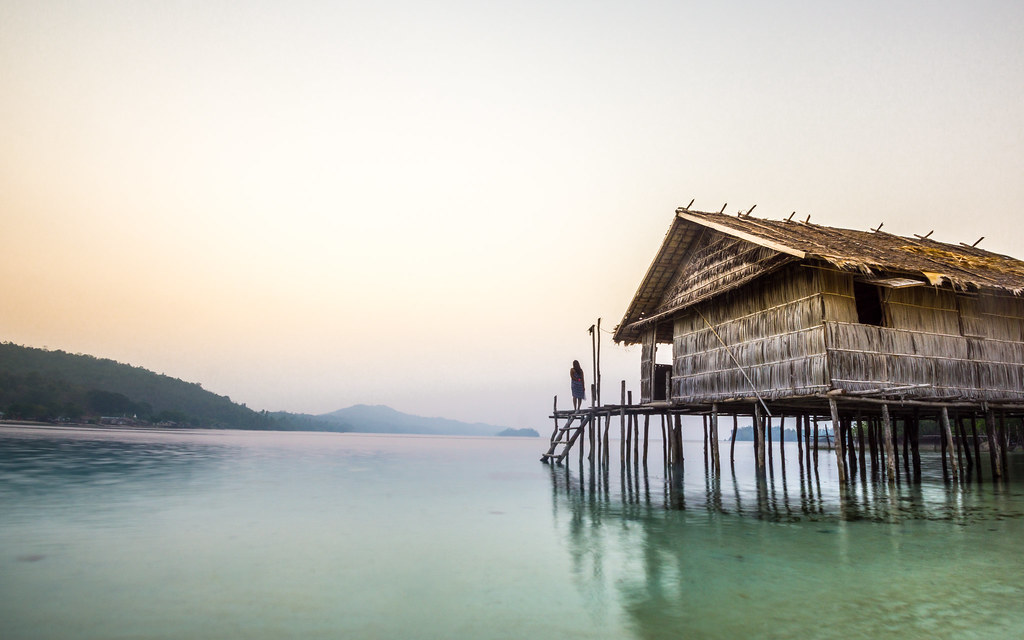 I prefer to live in homestays while travelling for a number of reasons. The biggest advantage is that you get to live like a local in a friendly family which in my opinion is the best way to feel the place. Raja Ampat has very few hotels, so it’s best to opt for a homestay. Every night I would hear the most interesting stories of the islands from my hosts. The locals will teach you the best ways to deal with garbage and how to make optimum use of the little resources available at their disposal. There is much to learn about their way of life, food and culture which is unique in so many ways. A few days of no connectivity and the purest air will give you mind and body a much need cleanse.
I prefer to live in homestays while travelling for a number of reasons. The biggest advantage is that you get to live like a local in a friendly family which in my opinion is the best way to feel the place. Raja Ampat has very few hotels, so it’s best to opt for a homestay. Every night I would hear the most interesting stories of the islands from my hosts. The locals will teach you the best ways to deal with garbage and how to make optimum use of the little resources available at their disposal. There is much to learn about their way of life, food and culture which is unique in so many ways. A few days of no connectivity and the purest air will give you mind and body a much need cleanse.
P.S.: If non-AC accommodations, staying in bamboo huts with basic mattresses and no wifi are not your thing then you’re better off waiting until a few good hotels come up in the area to visit Raja Ampat.
